
How to Use DHT22: Examples, Pinouts, and Specs
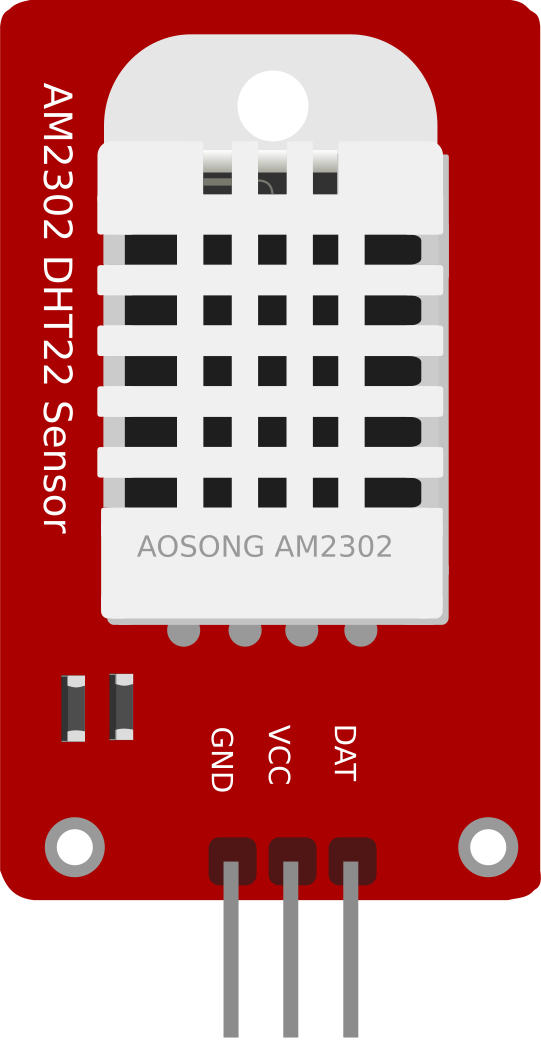
 Design with DHT22 in Cirkit Designer
Design with DHT22 in Cirkit DesignerIntroduction
The DHT22 is a digital temperature and humidity sensor that provides accurate readings of temperature in Celsius and humidity in percentage. It is a highly reliable and cost-effective solution for environmental monitoring. The sensor uses a capacitive humidity sensor and a thermistor to measure the surrounding air and outputs a digital signal on a single data pin, making it easy to interface with microcontrollers.
Explore Projects Built with DHT22
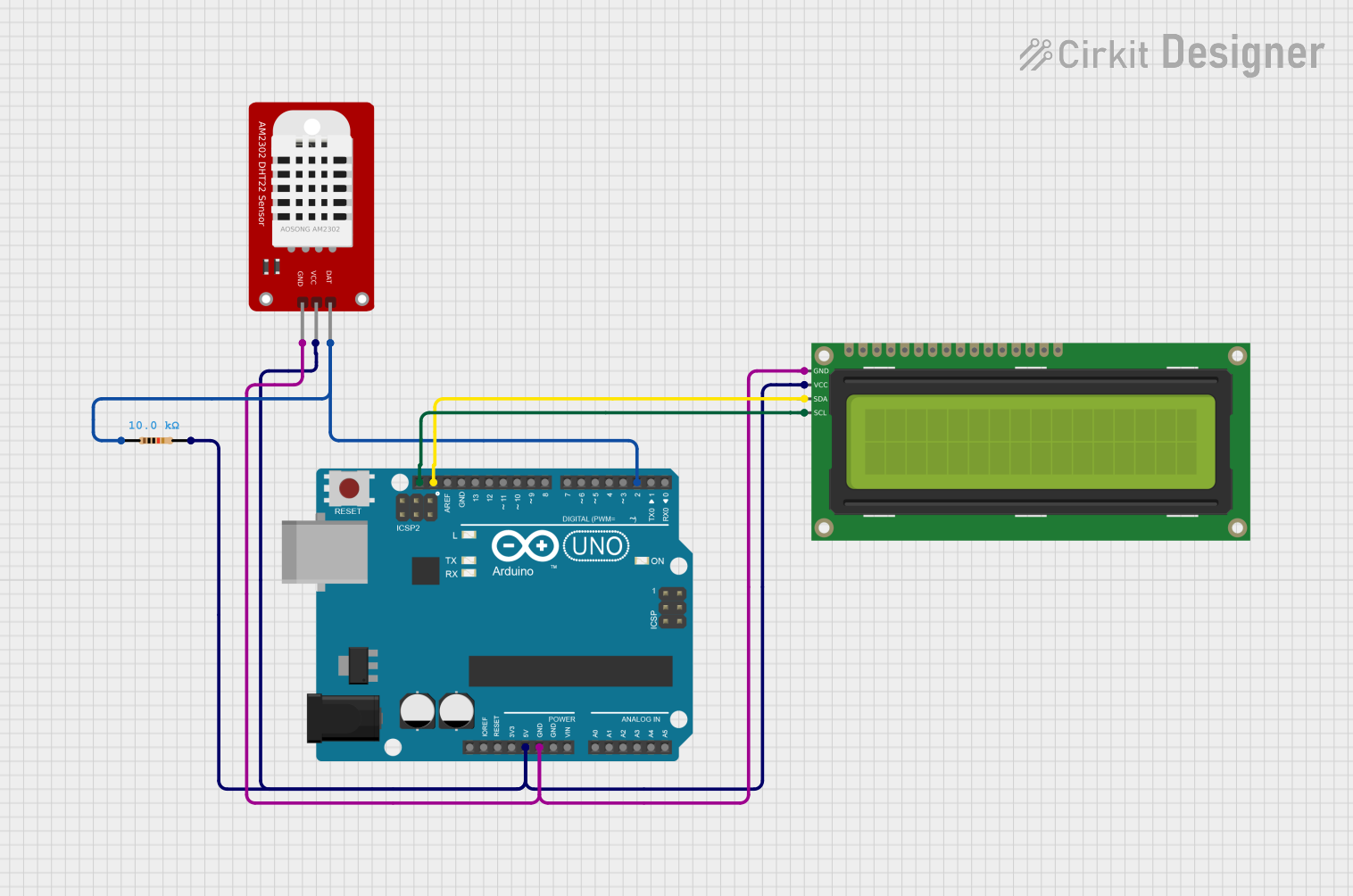
 Open Project in Cirkit Designer
Open Project in Cirkit Designer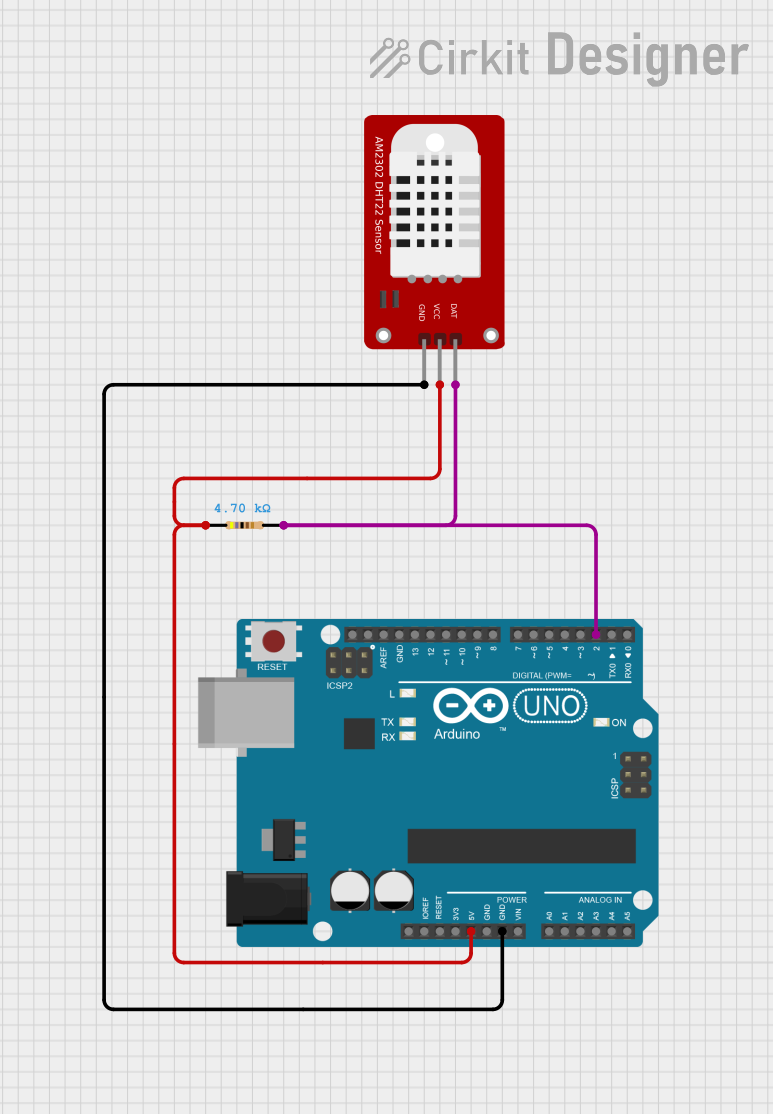
 Open Project in Cirkit Designer
Open Project in Cirkit Designer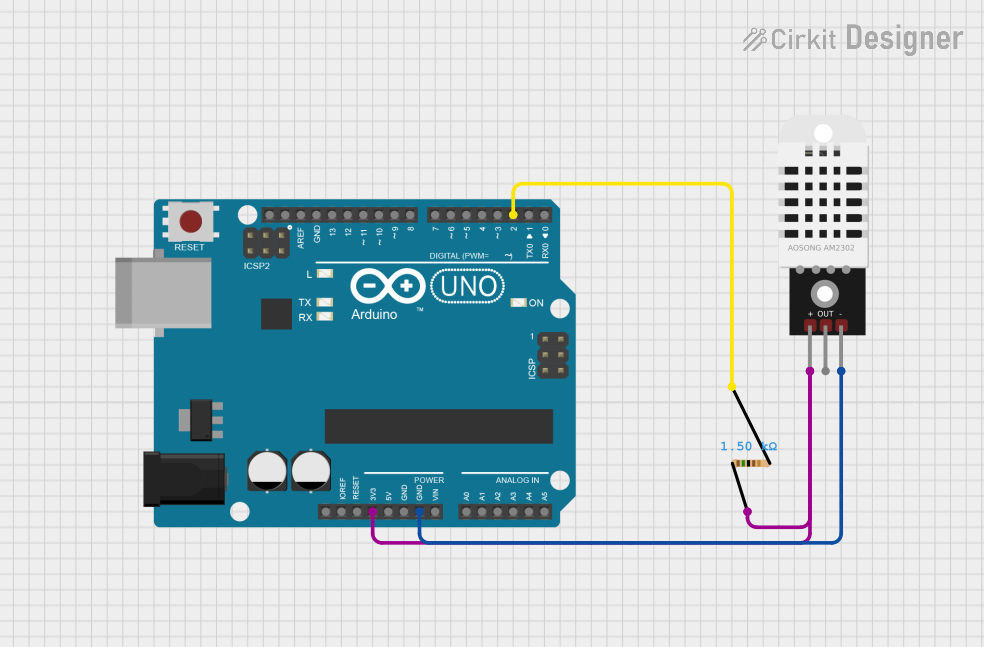
 Open Project in Cirkit Designer
Open Project in Cirkit Designer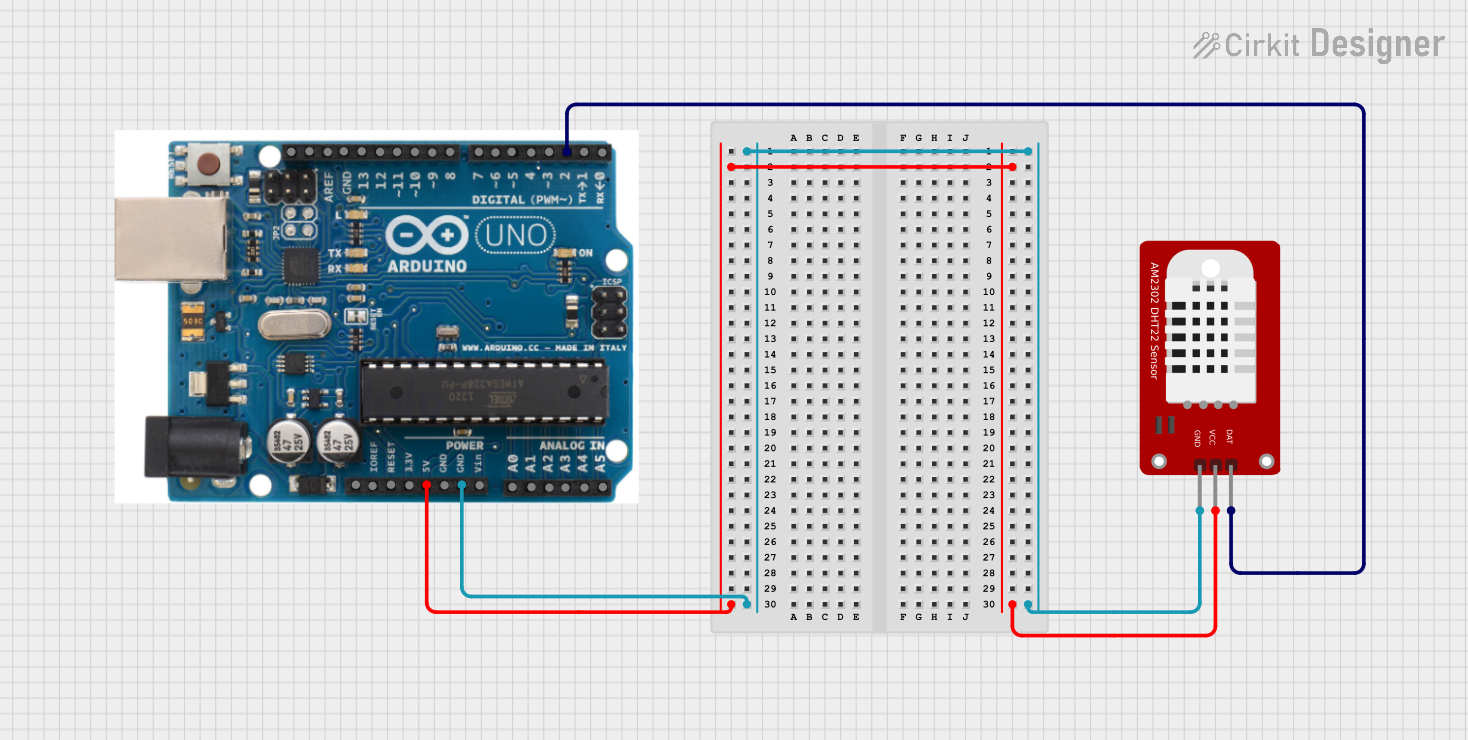
 Open Project in Cirkit Designer
Open Project in Cirkit DesignerExplore Projects Built with DHT22

 Open Project in Cirkit Designer
Open Project in Cirkit Designer
 Open Project in Cirkit Designer
Open Project in Cirkit Designer
 Open Project in Cirkit Designer
Open Project in Cirkit Designer
 Open Project in Cirkit Designer
Open Project in Cirkit DesignerCommon Applications and Use Cases
- Weather stations
- HVAC (Heating, Ventilation, and Air Conditioning) systems
- Greenhouse monitoring
- Industrial and home automation
- IoT (Internet of Things) projects
Technical Specifications
The DHT22 offers precise measurements and is designed for long-term stability. Below are its key technical details:
| Parameter | Value |
|---|---|
| Supply Voltage | 3.3V to 6V |
| Operating Current | 0.3mA (measuring), 60µA (standby) |
| Temperature Range | -40°C to +80°C |
| Temperature Accuracy | ±0.5°C |
| Humidity Range | 0% to 100% RH |
| Humidity Accuracy | ±2% RH |
| Sampling Period | 2 seconds |
| Communication Protocol | Single-wire digital signal |
Pin Configuration and Descriptions
The DHT22 has four pins, but only three are typically used in most applications. Below is the pinout:
| Pin Number | Name | Description |
|---|---|---|
| 1 | VCC | Power supply (3.3V to 6V) |
| 2 | DATA | Digital data output (requires a pull-up resistor) |
| 3 | NC (Not Connected) | No connection (leave unconnected) |
| 4 | GND | Ground |
Usage Instructions
How to Use the DHT22 in a Circuit
- Power the Sensor: Connect the VCC pin to a 3.3V or 5V power source and the GND pin to ground.
- Data Communication: Connect the DATA pin to a digital input pin on your microcontroller. Use a 10kΩ pull-up resistor between the DATA pin and the VCC pin to ensure proper signal levels.
- Timing Considerations: The DHT22 requires a 2-second interval between readings to ensure accurate data.
- Library Support: Use a compatible library (e.g., DHT library for Arduino) to simplify communication with the sensor.
Important Considerations and Best Practices
- Pull-Up Resistor: Always use a pull-up resistor on the DATA pin to ensure reliable communication.
- Sampling Rate: Do not attempt to read data more frequently than once every 2 seconds.
- Environmental Factors: Avoid placing the sensor in areas with high condensation or direct exposure to water, as this may damage the sensor.
- Cable Length: Keep the cable length between the sensor and the microcontroller as short as possible to avoid signal degradation.
Example: Connecting the DHT22 to an Arduino UNO
Below is an example of how to use the DHT22 with an Arduino UNO:
Circuit Diagram
- Connect the DHT22's VCC pin to the Arduino's 5V pin.
- Connect the GND pin to the Arduino's GND pin.
- Connect the DATA pin to digital pin 2 on the Arduino, with a 10kΩ pull-up resistor between the DATA pin and 5V.
Arduino Code
#include "DHT.h" // Include the DHT library
#define DHTPIN 2 // Pin connected to the DATA pin of DHT22
#define DHTTYPE DHT22 // Define the sensor type (DHT22)
DHT dht(DHTPIN, DHTTYPE); // Initialize the DHT sensor
void setup() {
Serial.begin(9600); // Start serial communication
Serial.println("DHT22 Sensor Test");
dht.begin(); // Initialize the DHT sensor
}
void loop() {
delay(2000); // Wait 2 seconds between readings
float humidity = dht.readHumidity(); // Read humidity
float temperature = dht.readTemperature(); // Read temperature in Celsius
// Check if any readings failed and print an error message
if (isnan(humidity) || isnan(temperature)) {
Serial.println("Failed to read from DHT sensor!");
return;
}
// Print the results to the Serial Monitor
Serial.print("Humidity: ");
Serial.print(humidity);
Serial.print(" %\t");
Serial.print("Temperature: ");
Serial.print(temperature);
Serial.println(" °C");
}
Troubleshooting and FAQs
Common Issues and Solutions
No Data Output:
- Ensure the pull-up resistor (10kΩ) is correctly connected between the DATA pin and VCC.
- Verify that the sensor is powered with the correct voltage (3.3V to 6V).
- Check the wiring and ensure the DATA pin is connected to the correct digital pin on the microcontroller.
Incorrect or NaN Readings:
- Ensure a delay of at least 2 seconds between consecutive readings.
- Verify that the sensor is not exposed to extreme environmental conditions (e.g., condensation or water).
Intermittent Communication Failures:
- Reduce the cable length between the sensor and the microcontroller.
- Use shielded cables if the sensor is placed far from the microcontroller.
FAQs
Q: Can the DHT22 measure negative temperatures?
A: Yes, the DHT22 can measure temperatures as low as -40°C.
Q: What is the maximum cable length for the DHT22?
A: The recommended maximum cable length is about 20 meters, but this depends on the quality of the cable and the pull-up resistor value.
Q: Can I use the DHT22 with a 3.3V microcontroller?
A: Yes, the DHT22 operates within a voltage range of 3.3V to 6V, making it compatible with 3.3V systems.
Q: How do I protect the sensor in high-humidity environments?
A: Use a protective enclosure or conformal coating to shield the sensor from condensation and water exposure.